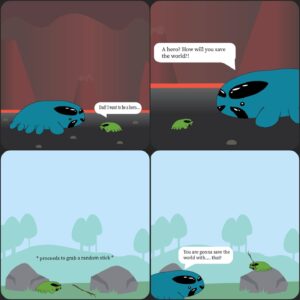
On the seeded planet, Mai 155b, life has only recently begun to make a foray onto the land. Simple tree-analogs carpet the shorelines and emerging wetlands. Among the first to colonize these new terrestrial environments has been the semi-aquatic Hexoarm.
This bean-shaped herbivore is a product of hybrid speciation – descending from the aquatic Hexoable and Armstrong.
The Hexoarm species feature a number of adaptations that allows it to thrive in this new environment. Their limbs, initially adapted for aquatic movement, have undergone gradual modifications. The bone plate that once restricted its ancestor’s range of motion became even more flexible and adaptable. This allows the Hexoarms to navigate diverse landscapes, utilizing their arms for a wide range of activities, from climbing trees to manipulating objects with remarkable dexterity.
Unlike their aquatic ancestors, the Hexoarms boast a more complex pulmonary system that enables efficient respiration on land. While cutaneous respiration still played a role, the ability to breathe air allow them to explore territories far beyond the water’s edge.
This transition in respiration has, in turn, triggered significant changes in their circulatory system, enhancing their endurance and adaptability to varying environments.
At present, the Hexoarm species has been undergoing explosive evolutionary radiation, giving rise to a plethora of new species, each with unique adaptations suited to their specific niches. Some of these new offshoots retain the vibrant colors and patterns of their Hexoable ancestors, enabling them to communicate and camouflage effectively in their diverse habitats. The range of sizes among Hexoarm species diversified as well. Some remain small and nimble, favoring agility in their pursuit of prey or evasion of predators. Others, much larger, had evolved to harness their strength and size advantage to dominate their respective ecosystems.
This guest entry is a result of a collab between Dupers, Artnoob100, and Oreosaurs
Media
The Hexoarm is a recurring species in many comic panels and social media posts by community artists.





